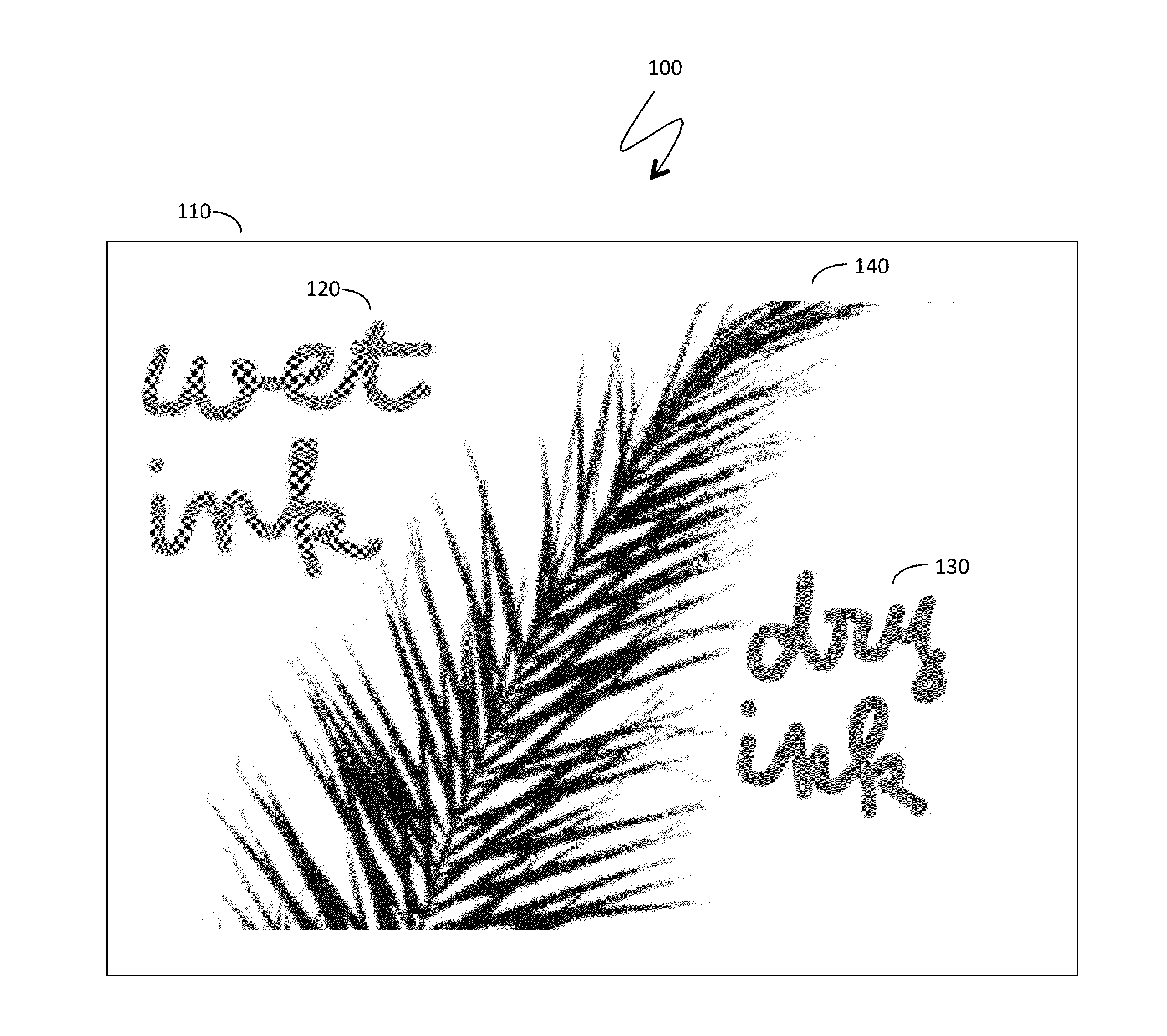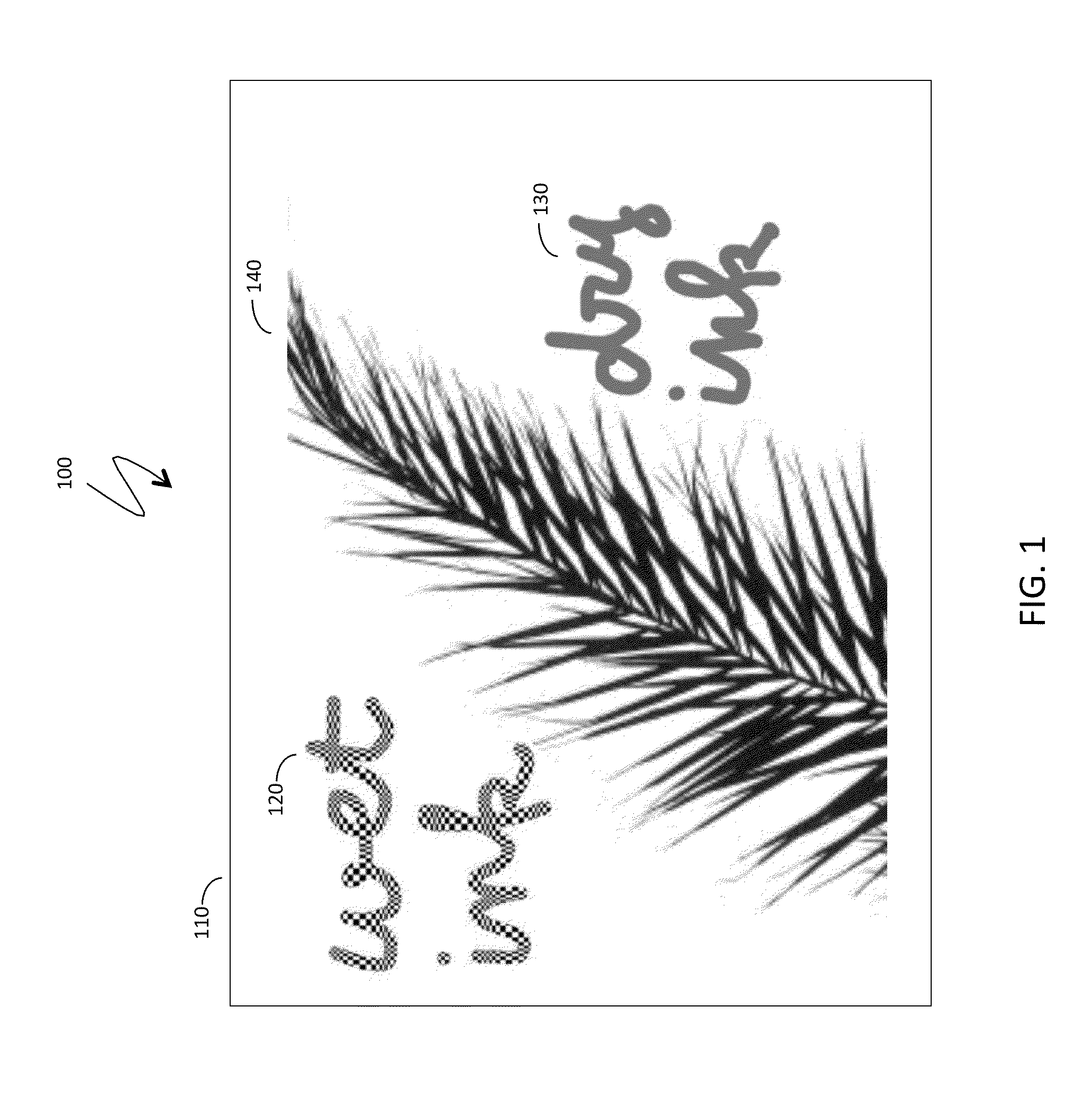Creation and manipulation of hand drawn objects with automatic grouping
a technology of automatic grouping and hand drawn objects, applied in the field of data processing and presentation, can solve the problems of affecting the intuitive design of multi-touch devices with writing and drawing capabilities, overloading product uis, and affecting the productivity of note-taking tools, so as to inhibit selection and manipulation
- Summary
- Abstract
- Description
- Claims
- Application Information
AI Technical Summary
Benefits of technology
Problems solved by technology
Method used
Image
Examples
Embodiment Construction
[0030]The system described herein provides an efficient non-conflicting combination of two principal user interface modes for tablets and other multi-touch devices operated by finger and / or stylus: (1) a writing and drawing mode and (2) an object manipulation and editing mode for fragments of handwritten text and drawings. Advancements of existing user interfaces are achieved through automatic time-and-space conditioned grouping or semi-automatic spatial grouping where portions of strokes create natural groups for manipulations and editing. An example is a freehand drawing of a house and a tree near the house that automatically form two groups of strokes, each editable on its own or selectable via multi-selection where a whole picture can be edited. Auto-grouping operation is enhanced with a moistening operation that allows continuation of complex drawings, while retaining an original grouping paradigm. Another operation, splitting of groups of strokes, may reverse automatic groupin...
PUM
 Login to View More
Login to View More Abstract
Description
Claims
Application Information
 Login to View More
Login to View More - R&D
- Intellectual Property
- Life Sciences
- Materials
- Tech Scout
- Unparalleled Data Quality
- Higher Quality Content
- 60% Fewer Hallucinations
Browse by: Latest US Patents, China's latest patents, Technical Efficacy Thesaurus, Application Domain, Technology Topic, Popular Technical Reports.
© 2025 PatSnap. All rights reserved.Legal|Privacy policy|Modern Slavery Act Transparency Statement|Sitemap|About US| Contact US: help@patsnap.com



